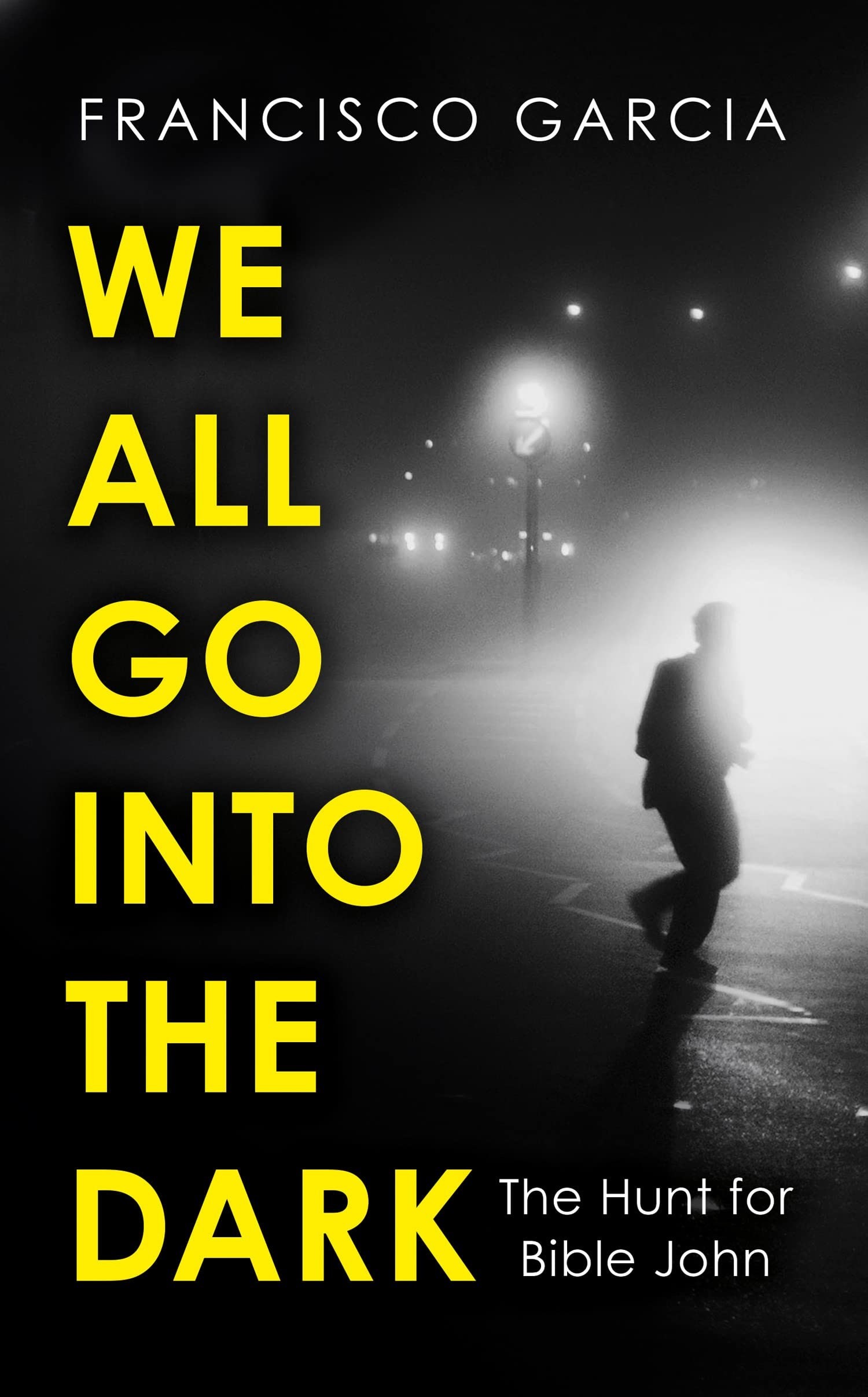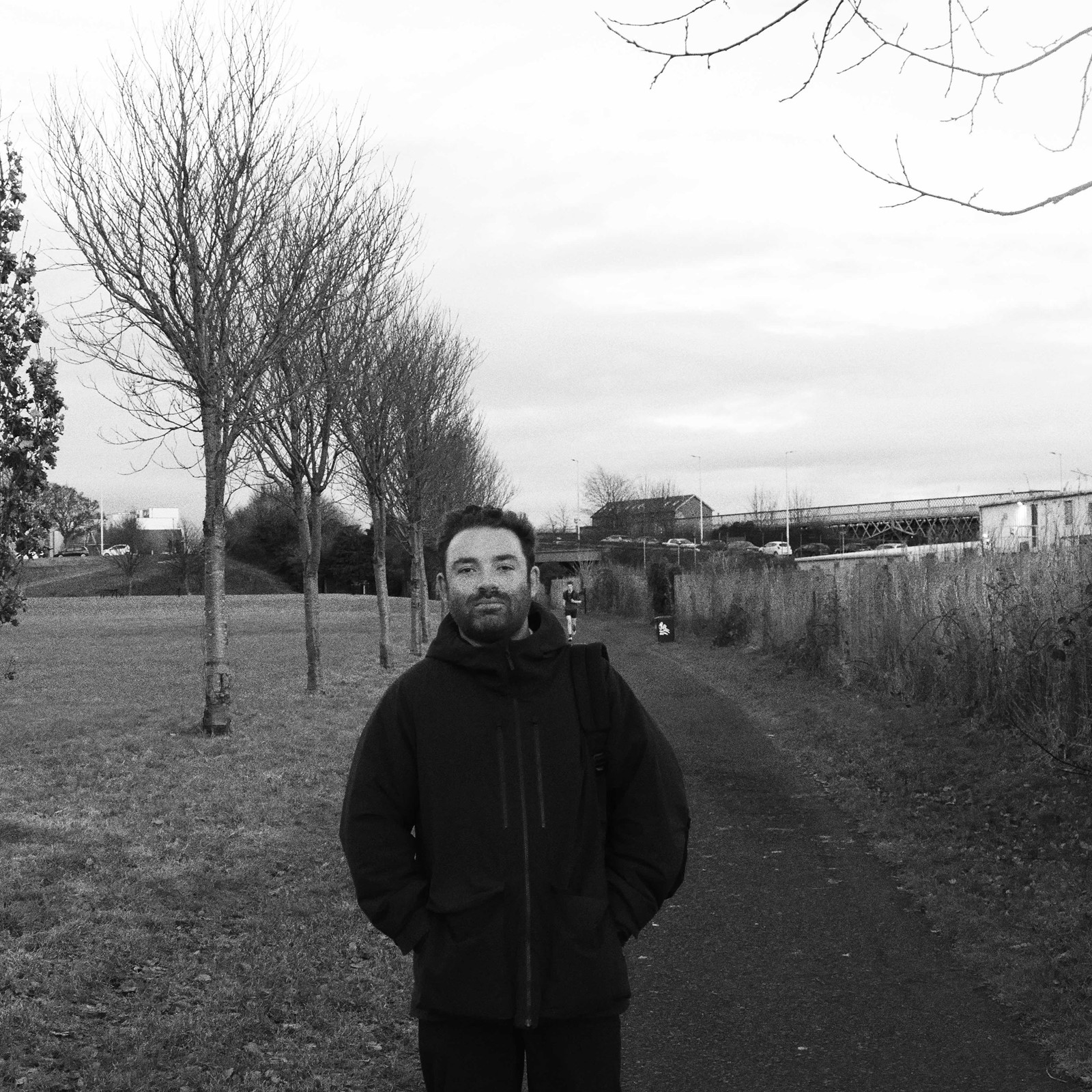We All Go Into the Dark: The Hunt for Bible John, a new non-fiction book by journalist Francisco Garcia, is about an unidentified serial killer who has haunted Scotland for over five decades. Bible John’s status as a folk devil is undeniable, but whether he actually existed remains far more ambiguous.
What we do know is that, between 1968 and 1969, three women were murdered in Glasgow. There were some notable similarities between the cases: they had all been strangled, they were all married, and they had all been dancing at the Barrowlands Ballroom. The police quickly came to the conclusion that a serial killer was at large, and the idea took hold in the public imagination, plunging the city into a state of terror and suspicion.
The ‘Bible John’ moniker, coined by a tabloid journalist, was based on the testimony of the final victim’s sister, Jeannie Williams. After a night out together at the Barrowlands, her sister Helen went home with a man who Jeannie later described as red-haired, well-spoken and of “a smart, modern appearance”, a man who quoted Old Testament and referred to the ballroom as an “adulterous den of iniquity”. Distorted by the press, this account gave rise to an urban legend which, for all the attention it provoked, eventually came to hinder the investigation. As Garcia explores, the evidence that these murders were connected is shakier than is typically assumed.
We All Go into the Dark is as much about the construction of the Bible John myth as the murders themselves. It’s both a straightforwardly compelling true crime book and a self-implicating critique of the genre, which lays bare the mechanisms through which real-world violence becomes a source of lurid entertainment. Along the way, Garcia attends a Bible John musical, visits a true crime conference, and encounters a fascinating cast of characters, including obsessive internet sleuths and a fraudulent true crime author.
Below, Garcia talks about the social history of Glasgow in the 1960s, the challenges of writing about a mystery for which there is no clear resolution, the cultural backlash against true crime, and why historical murders continue to inspire such obsessive fascination.

James Greig: How did your opinion on the Bible John case change before and after working on the book?
Francisco Garcia: When I started writing about this, in 2018, the consensus seemed to be fairly cut and dry: Peter Tobin [a Scottish serial killer convicted in 2006 for a separate series of murders] was responsible. But the more I learned, the more that certainty fell away. It doesn’t take much digging to realise that the Bible John myth is built on pretty rocky foundations. As I was writing the book, I became more interested in why people clung so tightly to their own interpretations, rather than whether I believed they were correct. By examining that kind of belief you can chip away at the wider question of why people are so fascinated by violent crime.
JG: The book is ambiguous by design, but do you come down more heavily on the idea that Bible John never existed?
FG: What I believe about the killings isn’t necessarily important, but I don’t think there was a serial killer. That fixation has been unhelpful over the decades, and has actively impeded the investigation of these women’s deaths.
JG: Among many other things, the book is a social history of post-war Glasgow. Why did you want to go so deep into the historical context?
FG: These murders inspired so much attention because they captured a specific moment of anxiety, both in Glasgow and in Scotland as a whole. It was an age of immense upheaval and change. Many of us will be familiar with the tropes of that: the high-rise flats, the slum clearances, the high rates of violence, the motorway smashing through historic areas, the way the built environment of the city was itself was morphing into something unknown and alien. It became this whole new city almost overnight, and Bible John seemed to capture the anxiety that went alongside that. As well as what was happening in Glasgow, it was also the time of Charles Manson, the Zodiac killer and the hippie moral panic. So when this scripture-quoting, red-haired folk devil arrives, that gets alighted upon as a sign of the times.
“I don’t think there was a serial killer. That fixation has been unhelpful over the decades, and has actively impeded the investigation of these women’s deaths” – Francisco Garcia
JG: You write that “Bible John has been born in a city that was only too ready to meet him”. Why was Glasgow so receptive to this myth?
FG: If you go back to the archives and speak to people who were there, it was a violent time and the media in general was full of stories of violence. There was also a sexual undertone to the way the murders were discussed. The story was a gift for the tabloids, which was partly because the Barrowlands Ballroom was a seedy place where men and women would slip off their wedding rings before going inside. The fact that the victims were young women, two of them single mothers, inspired a kind of thrilled revulsion: “What were they doing out?” The figure of Bible John became a judgement on the changing morals of the time, the permissive society and the sexual revolution.
JG: While it remains hugely popular, there’s been a backlash against true crime in recent years, often centred on the idea that it’s lurid and exploitative. Was that on your mind when you were writing the book?
FG: In the last decade, there’s been a true crime boom and an attendant boom in the commentary around it, so it was definitely a question on my mind – it couldn’t not be. As much as you might think you’re running against the tide, however sophisticated your critiques might be, you’re still contributing to the general store of true crime books.
JG: Were there any pitfalls you wanted to avoid?
FG: I made the decision not to interview any of the victim’s family members. At one point I did find a social media profile of the son of the first victim, and I considered sending him a message. But then I thought, what would I be doing that for? I also didn’t want to offer any opinion as to who the killer was, because once you go down that realm, it’s a different book. I tried to stay scrupulously neutral and let the evidence speak for itself.
“It’s a more interesting challenge to write around the ambiguity, and I think it made the book richer in material” – Francisco Garcia
JG: I think those kinds of revelations are inevitably going to be anticlimactic – it’s always just going to be some guy.
FG: If your life has been torn apart by the murder of a loved one, then it’s understandable to want closure. But more broadly, what’s going to happen 55 years later? It’s going to be some guy who is either long dead or living in a nursing home in Dumfriesshire.
JG: To what extent did you want the book to function as a critique of true crime?
FG: I was trying to be at least fairly subtle with it because I don’t think you need me banging you over the head with these arguments that have been litigated over and over again (often with great skill and precision). But I do feel that you can’t write a book about something like this, in 2023, and not offer up some form of critique. What interested me was how the story has shifted over the decades and the liberties people have taken with it. Bible John has been a prompt for a lot of people’s interpretive powers; there’s been all sorts of things written about the case, from factual accounts to the wildest flights of fancy.
JG: Was it challenging to write a true crime book without there being a clear resolution?
FG: It’s a more interesting challenge to write around the ambiguity, and I think it made the book richer in material. Looking through the Daily Record archives, I found all these false starts and dud leads. Why did some guy in the 1970s come out of the woodwork to accuse an old school friend who was living in Holland at the time? The psychology of that is much more interesting to me than ending the book by going ‘ta-da!’, ripping off the mask and revealing Bible John.
We All Go Into the Dark: The Hunt for Bible John by Francisco Garcia is published by HarperCollins and is out now.
